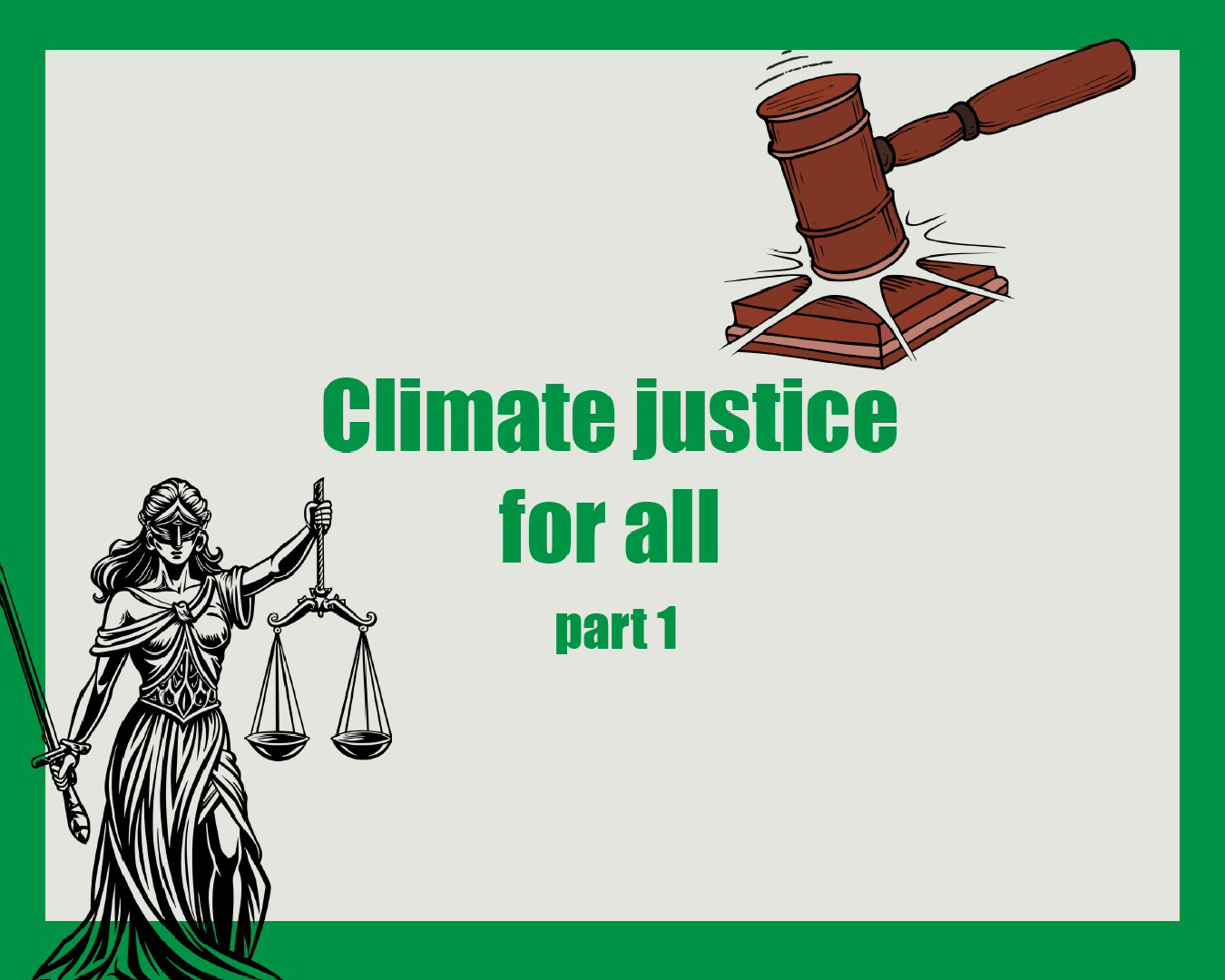Climate change is no longer a problem of the future – it is the present. However, although we all live on the same planet, we are not all equally responsible for it, nor do we feel its effects in the same way. This brings us to the key question: What is climate justice and why do we need it?
What Does Climate Justice Mean?
Climate justice is not just an ecological issue, but also one of social and economic equality. It is based on the idea that climate change disproportionately impacts the most vulnerable communities, despite their minimal contribution to the problem. At the same time, wealthier countries and corporations, which have historically emitted the most greenhouse gases, have the capacity to adapt to changes, while the poor are often left with no choice.
The principle of climate justice demands that those who have contributed the most to global warming bear a larger burden in solving the problem and that support be provided to those most affected – whether through financial assistance, knowledge transfer, or concrete adaptation actions.
Personal Reflection: Climate (In)Justice in Our Backyard
As a climate ambassador, I witness every day how climate injustice is not just an abstract concept, but a reality unfolding before our eyes. For example, while the European Union is increasingly funding green transition initiatives, in Croatia – particularly in less developed regions like Brod-Posavina County – many people are still unaware that they could benefit from these funds. At the same time, we are already feeling the consequences of climate change through more frequent floods, droughts, and extreme temperatures, but the possibilities for adaptation are limited.
I see how young people, who will be most affected by climate change, lack sufficient information and tools to become part of the solution. Unfortunately, institutions like AMPEU, which should recognize the importance of involving rural youth in projects on this topic, often fail to provide adequate support. This approach can be viewed as a form of greenwashing and socialwashing – creating the illusion of engagement while little changes in practice.
A Good Example: Uruguay – Small Country, Big Change
Uruguay is one of the best examples of how climate justice can be achieved in practice. Despite limited resources, this South American country decided to invest in renewable energy, primarily wind and solar power. Today, over 95% of Uruguay’s electricity comes from renewable sources, and electricity prices are among the lowest in the region. In addition to ecological benefits, this model has enabled a just transition – creating new jobs for former fossil fuel industry workers and providing cheaper energy accessible to all citizens.
Source: Uruguay’s Gender and Climate Change Policy
Uruguay proves that even small countries can bring about big changes when there is political will and community involvement.
A Bad Example: Bangladesh – Paying for Others’ Sins
On the other hand, Bangladesh is an example of climate injustice in action. This country has one of the smallest carbon footprints in the world, but it is simultaneously one of the most vulnerable countries to climate change. Rising sea levels threaten to submerge large parts of the coast, and millions of people are forced to leave their homes. Droughts and monsoons devastate agriculture, further increasing poverty.
While Bangladesh is paying the price for the West’s industrialization, funds for adaptation and assistance come slowly, insufficiently, and often conditioned by political interests. This is the essence of climate injustice – those who are least responsible bear the greatest consequences.
Source: The Guardian – Bangladesh’s Struggles with Extreme Weather
How to Find Solutions?
Solutions exist, but they require shared responsibility, solidarity, and urgent action:
- Just Transition – The shift to a green economy must not further harm workers and vulnerable communities.
- Global Financial Assistance – Wealthy countries must ensure a fair distribution of funds for adapting to climate change.
- Education and Involvement of Youth – If we don’t empower young people to be part of the solution, the injustice will only deepen.
- Local Solutions for a Global Problem – Every community can contribute to reducing emissions and sustainable development, but it needs support and resources.
Conclusion: Time to Act
Climate justice is not a luxury – it is a necessity. We cannot afford to wait. If we do not ensure a fair distribution of responsibility and resources today, tomorrow we will face even greater inequalities, conflicts, and migrations caused by climate change.
We all have a role in solving this problem. The question is – will we act now, or will we allow climate injustice to become even worse?
As an ambassador of the European Climate Pact, I note that the views expressed in this article are my personal opinions and do not necessarily reflect the views of the European Commission or the European Climate Pact.
#EUClimatePact #ClimateJustice #ActOnClimate #GreenTransition #MakeClimateJusticeReal
As an ambassador of the European Climate Pact, I note that the views expressed in this article are my personal opinions and do not necessarily reflect the views of the European Commission or the European Climate Pact.
autor: Zoran Pavletić



